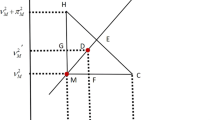
Overview
- Focuses on type-2 fuzzy systems for pattern recognition problems
- Describes recent advances of type-2 fuzzy systems for real-world pattern recognition problems, such as speech recognition, handwriting recognition and topic modeling
- Topics including type-2 fuzzy sets, type-2 fuzzy logic, graphical models, pattern recognition and artificial intelligence
- Includes supplementary material: sn.pub/extras
Part of the book series: Studies in Computational Intelligence (SCI, volume 591)
Access this book
Tax calculation will be finalised at checkout
Other ways to access
About this book
This book discusses how to combine type-2 fuzzy sets and graphical models to solve a range of real-world pattern recognition problems such as speech recognition, handwritten Chinese character recognition, topic modeling as well as human action recognition. It covers these recent developments while also providing a comprehensive introduction to the fields of type-2 fuzzy sets and graphical models. Though primarily intended for graduate students, researchers and practitioners in fuzzy logic and pattern recognition, the book can also serve as a valuable reference work for researchers without any previous knowledge of these fields. Dr. Jia Zeng is a Professor at the School of Computer Science and Technology, Soochow University, China. Dr. Zhi-Qiang Liu is a Professor at the School of Creative Media, City University of Hong Kong, China.
Similar content being viewed by others
Keywords
Table of contents (9 chapters)
-
Front Matter
Authors and Affiliations
About the authors
Prof. Jia ZENG is currently working at the School of Computer Science and Technology, Soochow University, Suzhou 215006, China. Before that, he was a Visiting Research Scholar with the Department of Computer Science, Hong Kong Baptist University from 2009 to 2010 and a Research Fellow in the Department of Electronic Engineering, City University of Hong Kong from 2006 to 2008. He obtained Ph.D. from School of Creative Media, City University of Hong Kong in October 2006, and B.Eng. with excellent academic honors at Wuhan University of Technology, China in 2002. His research interests have been mainly in the areas of type-2 fuzzy systems, probabilistic graphical models, pattern recognition and computational biology. He has authored and co-authored a number of publications appearing in high-profile journals and leading conferences. He won the 2006 Postgraduate Student Paper Contest, Second Prize, IEEE Region 10 and 2005 Postgraduate Student Paper Contest, First Prize, IEEE Region 10, respectively. He has also been invited to serve in a number of journals and conferences as the reviewer.
Prof Zhi-Qiang LIU received the M.A.Sc. degree in Aerospace Engineering from the Institute for Aerospace Studies, the University of Toronto, and the Ph.D. degree in Electrical Engineering from The University of Alberta, Canada. He is currently at the School of Creative Media, City University of Hong Kong. He has taught computer architecture, computer networks, artificial intelligence, programming languages, machine learning, pattern recognition, computer graphics, and art & technology. His interests are neural-fuzzy systems, machine learning, media computing and computer vision.
Bibliographic Information
Book Title: Type-2 Fuzzy Graphical Models for Pattern Recognition
Authors: Jia Zeng, Zhi-Qiang Liu
Series Title: Studies in Computational Intelligence
DOI: https://doi.org/10.1007/978-3-662-44690-4
Publisher: Springer Berlin, Heidelberg
eBook Packages: Engineering, Engineering (R0)
Copyright Information: Tsinghua University Press, Beijing and Springer-Verlag Berlin Heidelberg 2015
Hardcover ISBN: 978-3-662-44689-8Published: 29 September 2014
Softcover ISBN: 978-3-662-51522-8Published: 10 September 2016
eBook ISBN: 978-3-662-44690-4Published: 17 September 2014
Series ISSN: 1860-949X
Series E-ISSN: 1860-9503
Edition Number: 1
Number of Pages: XIII, 201
Number of Illustrations: 112 b/w illustrations
Additional Information: Jointly published with Tsinghua University Press, Beijing, China
Topics: Computational Intelligence, Artificial Intelligence, Pattern Recognition, Signal, Image and Speech Processing



